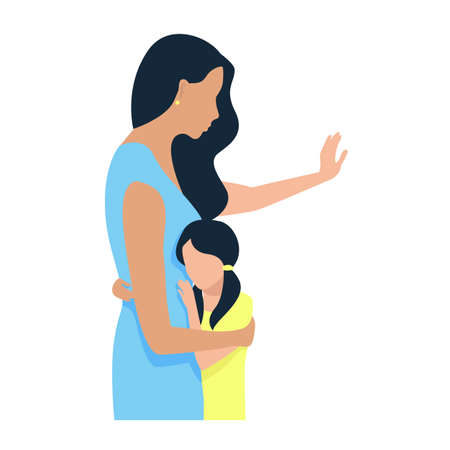1. Introduction to Motor Skills and Language Development
When we think about how babies learn to speak, we often focus on the words they hear and the way caregivers communicate with them. However, research suggests that motor skills play a crucial role in early language acquisition. From reaching for objects to crawling and even simple hand gestures, these movements are closely linked to a childs ability to develop speech and communication skills.
Understanding Motor Skills
Motor skills refer to the physical abilities that allow children to move and control their bodies. These skills are generally divided into two categories:
| Type of Motor Skill | Description |
|---|---|
| Gross Motor Skills | Involve large muscle groups and enable movements like crawling, walking, and jumping. |
| Fine Motor Skills | Involve small muscle movements, such as grasping objects, pointing, and manipulating toys. |
The Link Between Movement and Speech
A growing body of research indicates that motor development is intertwined with language learning. For example, when babies start using their hands to point at objects, they are not only developing fine motor skills but also laying the foundation for communication. Similarly, as toddlers learn to walk, their ability to explore their environment increases, exposing them to more language-rich experiences.
Why This Connection Matters
The relationship between motor skills and language development is essential because it helps shape cognitive growth. When children develop strong motor skills, they often have an easier time mastering speech sounds, understanding words, and engaging in meaningful interactions with others. By recognizing this connection early on, parents and caregivers can support both motor and language development through activities that encourage movement and communication.
2. How Gross and Fine Motor Skills Influence Speech
When we think about language development in babies, we often focus on sounds, words, and interactions. However, physical movements—both big and small—play a crucial role in helping infants build the foundation for speech and communication. From crawling to using their fingers to grasp objects, these motor skills are deeply connected to cognitive growth and language learning.
The Role of Gross Motor Skills in Language Development
Gross motor skills involve large muscle movements, such as crawling, sitting up, and walking. These movements help babies explore their environment and engage with caregivers, which strengthens their understanding of communication. Crawling, in particular, has been linked to brain development that supports language acquisition.
Crawling and Cognitive Connections
Crawling helps babies develop hand-eye coordination, spatial awareness, and even early problem-solving skills—all of which contribute to better language processing abilities. As they move around, they interact more with their surroundings, increasing their exposure to new words and concepts.
The Importance of Fine Motor Skills in Speech Development
Fine motor skills involve smaller movements, such as grasping objects, pointing, and manipulating toys. These activities strengthen the muscles needed for precise mouth movements and speech production.
Hand Coordination and Language Growth
Babies who frequently use their hands to explore objects tend to develop stronger connections between movement and language. Simple actions like pointing at objects or turning book pages help them associate words with meanings.
| Motor Skill Type | Examples | Language Benefits |
|---|---|---|
| Gross Motor Skills | Crawling, walking, sitting up | Enhances brain connections related to speech processing |
| Fine Motor Skills | Grasping toys, pointing, turning pages | Aids in word association and mouth coordination for speech |

3. The Brain-Body Connection in Early Learning
When babies move, they are doing more than just exploring their surroundings—they are building essential neural connections that support both motor and language development. Research shows that physical movement, like crawling, reaching, and grasping, plays a crucial role in strengthening the pathways between the brains motor and language centers. This connection helps children develop speech and communication skills more effectively.
How Movement Supports Language Development
Physical activities encourage brain growth by engaging multiple senses at once. When a baby reaches for a toy, for example, they are not only refining their coordination but also reinforcing their ability to associate words with actions. Below is an overview of how different types of movements contribute to early language acquisition:
| Motor Skill | Language Benefit |
|---|---|
| Crawling | Strengthens coordination between both sides of the brain, improving cognitive processing for speech patterns. |
| Gesturing (Pointing, Waving) | Encourages symbolic thinking, which is a key step toward verbal communication. |
| Clapping and Hand Movements | Aids rhythm recognition, helping babies understand speech cadences and sentence structures. |
| Mimicking Facial Expressions | Develops social communication skills by teaching babies how to interpret emotions and respond appropriately. |
The Role of Active Engagement in Speech Development
The more actively a baby engages in physical movement, the stronger their neural connections become. Activities such as tummy time, baby yoga, or simple interactive games provide valuable opportunities for infants to strengthen both their motor and language abilities. Parents can encourage this by narrating daily activities (“Let’s reach for the ball!”), using songs with hand motions, or playing peekaboo to enhance verbal interaction.
Tips for Encouraging Movement-Based Learning
- Create a safe play space: Allow your baby room to move freely without obstacles.
- Add interactive toys: Choose toys that encourage grasping, shaking, or pushing to boost fine motor development.
- Tie actions to words: Narrate movements (“You’re kicking your feet!”) to reinforce word associations.
- Simplify sign language: Simple gestures like “more” or “all done” help bridge movement and speech understanding.
The link between motor skills and early language acquisition highlights how movement isnt just about physical strength—it’s also key to communication development. By fostering an environment rich in physical engagement, parents can help lay a strong foundation for their childs speech and cognitive abilities.
4. Practical Activities to Support Both Motor and Language Growth
Encouraging both motor skills and language development in young children can be fun and engaging with the right activities. Here are some evidence-based ways to support your little one’s growth in both areas simultaneously.
Tummy Time for Strength and Communication
Tummy time is essential for building upper body strength, which plays a crucial role in later speech development. When babies lift their heads, they strengthen muscles needed for both posture and oral motor skills.
How to Make Tummy Time Engaging:
- Place a mirror in front of your baby so they can see their reflection.
- Talk or sing to them while they are on their tummy to encourage vocalization.
- Use colorful toys to motivate movement and reaching.
Finger Play for Fine Motor and Speech Coordination
Simple finger play songs like “Itsy Bitsy Spider” help develop fine motor control while reinforcing rhythm and speech patterns.
Benefits of Finger Play:
| Motor Skill Development | Language Development |
|---|---|
| Improves hand-eye coordination | Enhances word association with gestures |
| Strengthens finger dexterity | Encourages imitation of sounds and words |
| Prepares hands for future writing skills | Supports early vocabulary growth |
Sensory Interactions to Boost Learning
Sensory play, such as touching different textures, playing with water, or exploring various materials, helps build connections between movement and language.
Sensory Activity Ideas:
- Texture Boards: Let babies feel soft, rough, bumpy, or smooth surfaces while describing each texture.
- Water Play: Use cups and spoons to pour water while introducing words like “splash” and “pour.”
- Mimic Sounds: Encourage babies to copy sounds they hear from different sensory objects like crinkly paper or rattles.
5. Encouraging a Holistic Approach to Early Development
Supporting your childs motor and language development doesnt require elaborate plans or expensive toys. By incorporating simple, intentional interactions into daily routines, parents and caregivers can create an enriching environment that fosters both movement and communication skills.
Making the Most of Everyday Activities
Everyday moments provide excellent opportunities for encouraging motor and language development. Here are some simple ways to integrate these skills into daily life:
| Activity | Motor Skill Development | Language Skill Development |
|---|---|---|
| Meal Time | Encourage self-feeding with utensils to develop fine motor skills. | Name foods, describe textures, and engage in conversation during meals. |
| Dressing Up | Let your child practice buttoning, zipping, or putting on shoes. | Name clothing items and colors while dressing them. |
| Outdoor Play | Activities like running, climbing, and throwing balls improve coordination. | Talk about surroundings, introduce new words, and encourage storytelling. |
| Singing and Dancing | Dancing helps with balance and coordination. | Songs introduce rhythm, new vocabulary, and repetition for learning. |
| Puzzle or Block Play | Puzzles enhance hand-eye coordination; stacking blocks develops grasping skills. | Name shapes, colors, and encourage problem-solving discussions. |
The Power of Intentional Interaction
The way you interact with your child plays a crucial role in their overall development. Simple strategies can make a big difference:
- Narrate Daily Activities: Talk through what youre doing as you cook, clean, or go for a walk. This introduces new vocabulary naturally.
- Encourage Imitation: Children love copying adults. Demonstrate actions like clapping, waving, or stomping feet while pairing them with words.
- Create Opportunities for Choices: Ask simple questions such as “Do you want the red cup or the blue cup?” This supports decision-making and verbal expression.
- Praise Efforts, Not Just Outcomes: Celebrate attempts at using new words or trying a new movement to build confidence.
- Avoid Over-Correcting: If your child mispronounces a word or struggles with a task, model the correct way gently instead of emphasizing mistakes.
The Role of Repetition and Routine
You don’t need to constantly introduce new activities—children thrive on repetition. Familiar routines help reinforce learning by allowing them to practice movements and words in a comfortable setting. Whether its singing the same song every morning or having a bedtime story ritual, consistency strengthens both motor and language connections.
A Supportive Environment Makes All the Difference
Your home is your childs first learning space. Keep it engaging by offering safe areas for movement, accessible toys that encourage interaction, and plenty of opportunities for conversation. The more they explore through movement and sound, the stronger their foundational skills will become!


